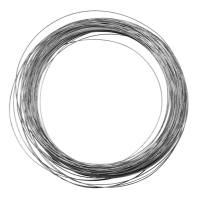
What is a sculpture?
A sculpture is a three-dimension object made using any one of the basic sculpting processes. These include carving, casting, constructing or modeling. Carving materials may be bone, ivory, stone or wood. Modeling and casting use clay or wax, while constructions glue materials together.
- Show All
- Established
- Discoveries
ARTWORKS RELATED TO SCULPTURE / OBJECT
Yayoi Kusama
Yayoi Kusama, My Heart That Blooms in the Darkness of Night, 2020
Sculpture / Object
Mixed Media
GBP 140,000 - 170,000

A printing technique in which an image is carved into a woodblock surface typically using gouges while leaving the surface level with the printing parts. Areas cut away by the artist carry no ink while images or characters carry ink for producing the desired print. Cutting is done along the wood's grain unlike in wood engraving in which the block is cut at the end-grain. Surface is inked using an ink-covered roller that's rolled on the surface so as to leave ink on the flat surface and not on non-printing areas.






















